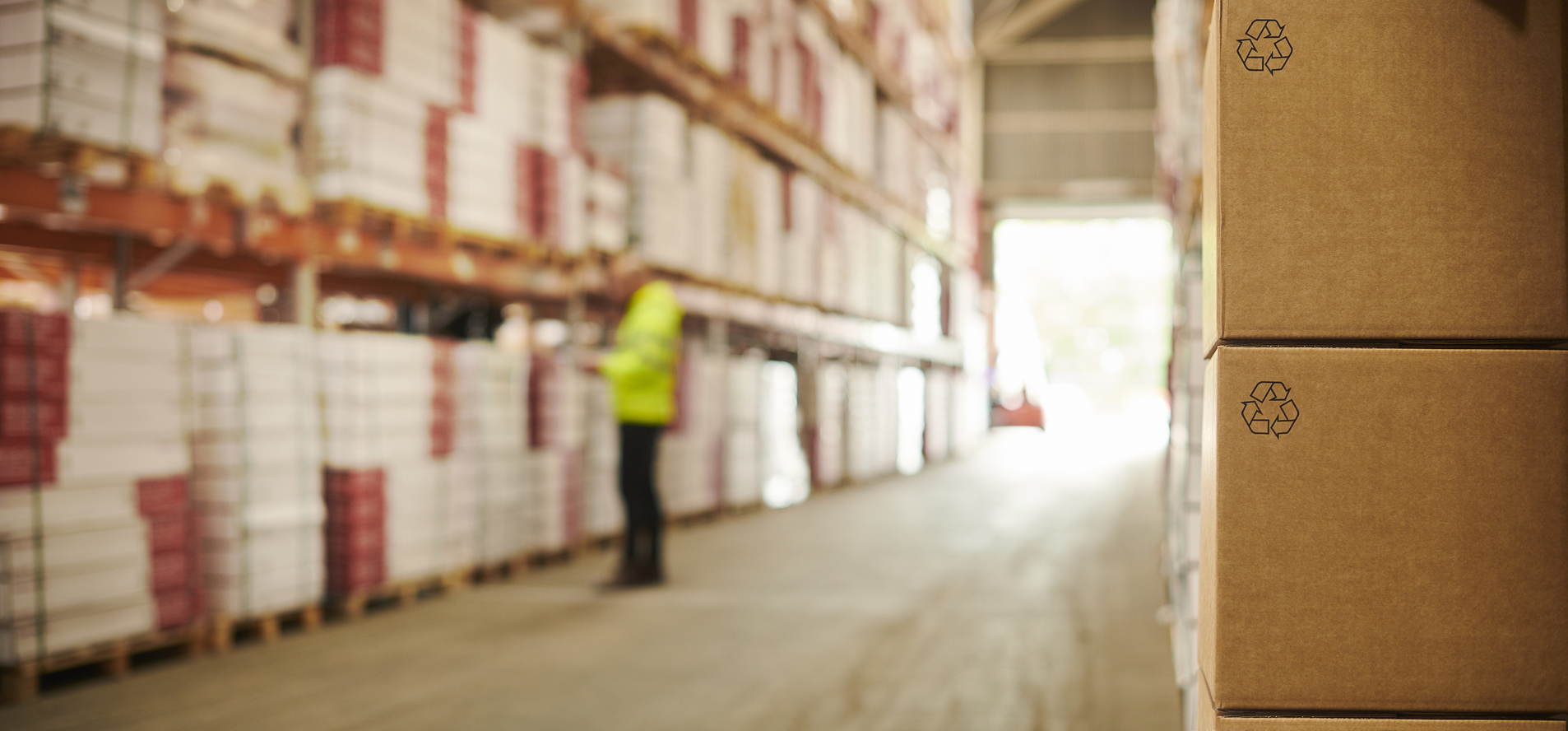จากข้อมูลบรรจุภัณฑ์ของ Euromonitor พบว่าอุตสาหกรรมเครื่องดื่ม ความงามและของใช้ส่วนตัว อาหารสุนัขและแมว และอาหารบรรจุหีบห่อคิดเป็น 4 ล้านล้านหน่วยบรรจุภัณฑ์การค้าในปี 2022 อย่างไรก็ตาม บริษัทจำนวนมากแทบจะไม่สามารถปฏิบัติตามพันธสัญญาด้านความยั่งยืนในปี 2025 ได้ ความพยายามในการจัดการของเสียอยู่ภายใต้การตรวจสอบข้อเท็จจริงเพื่อให้สอดคล้องกับกฎหมายที่เข้มงวดขึ้นเพื่อตอบสนองความต้องการของผู้บริโภคที่ บริษัทจึงจำเป็นต้องการแก้ปัญหาบรรจุภัณฑ์ดกังกล่าว เพราะผู้บริโภคทั่วโลกต่างตระหนักถึง แนวคิดความยั่งยืน แนวคิดการรีไซเคิลเชิงรุก และแนวคิด “น้อยแต่ได้มาก” โดยการลดการใช้พลาสติก
ตามรายงานของ McKinsey ได้กล่าวว่าความยั่งยืนของบรรจุภัณฑ์กลายเป็นเทรนด์สำคัญที่กำหนดทิศทางอุตสาหกรรมบรรจุภัณฑ์ โดยผู้บริโภคห่วงใยใส่ใจสิ่งแวดล้อมและผลกระทบจากการรั่วไหลของบรรจุภัณฑ์มากขึ้น ด้วยเหตุนี้ กฎระเบียบด้านความยั่งยืนใหม่เข้มงวดมากขึ้นจึงเกิดขึ้นในหลายด้านและมีมากขึ้นเรื่อย ๆ อย่างไรก็ตาม ส่วนการมุ่งเน้นแนวทางของหน่วยงานกำกับดูแลก็แตกต่างกัน และจะแตกต่างกันมากขึ้นในระดับประเทศหรือระดับรัฐ แรงกดดันการลดของเสียจากบรรจุภัณฑ์เพิ่มขึ้นอย่างมาก เมื่อเผชิญกับความเชื่อมั่นของผู้บริโภคทั่วโลกอันเป็นผลจากการรั่วไหลของบรรจุภัณฑ์ลงสู่มหาสมุทร และหน่วยงานกำกับดูแลกำลังตอบสนองต่อเสียงต่อต้านของสาธารณชน

Source: Unwrapping Sustainable Packaging, EU Monitor International

Source: Unwrapping Sustainable Packaging, EU Monitor International
การใส่ใจความยั่งยืนที่เพิ่มขึ้นภายในเอเชียที่กำลังพัฒนานับว่าสำคัญต่อการทำความเข้าใจมุมมองของผู้บริโภค อันจะเป็นโอกาสให้แก่บริษัทบรรจุภัณฑ์ที่เติบโตจากเทรนด์ดังกล่าว ในช่วงทศวรรษที่ผ่านมา อุตสาหกรรมบรรจุภัณฑ์ทั่วโลกมีการเติบโตอย่างต่อเนื่อง โดยเศรษฐกิจที่เติบโตอย่างรวดเร็วในกลุ่มประเทศเอเชียเกิดใหม่ เป็นตัวขับเคลื่อนการเติบโตที่สำคัญ รวมถึงการเติบโตอย่างแข็งแกร่งของการค้าปลีกที่มีการจัดระเบียบและการใช้บรรจุภัณฑ์ที่เพิ่มขึ้น เพื่อรองรับความต้องการของผู้บริโภคในด้านความสะดวกสบาย การเติบโตอย่างแข็งแกร่งของบรรจุภัณฑ์ ได้นำไปสู่ภาระด้านสิ่งแวดล้อมที่เพิ่มขึ้นเนื่องจากขาดระบบรวบรวมและระบบรีไซเคิลบรรจุภัณฑ์ที่พัฒนาจนสามารถรองรับการจัดการขยะที่เพิ่มขึ้น อย่างไรก็ดี พบว่าการลดของเสียจากบรรจุภัณฑ์ และการดำเนินการ ทั้งที่มาจากผู้ผลิตสินค้าอุปโภคบริโภคที่เคลื่อนไหวเร็ว (FMCG) ผู้ค้าปลีก และผู้ออกกฎหมาย ได้กลายเป็นแรงกดดันที่พุ่งทะยายสูงขึ้นอย่างรวดเร็ว

Source: Unwrapping Sustainable Packaging, EU Monitor International

Source: McKinsey Packaging Survey

Source: McKinsey Packaging Survey
ปัจจัยหนึ่งที่มักถูกตั้งข้อสังเกตว่าเป็นสิ่งท้าทายความสามารถของบริษัท ในการบรรลุเป้าหมายอันทะเยอทะยานด้านความยั่งยืนตามที่ระบุไว้นั้น ดูเหมือนว่าจะเป็นความซับซ้อนพื้นฐานของพอร์ตผลิตภัณฑ์ของตน ตัวอย่างเช่น ข้อกำหนดทางเทคนิคที่ล้าสมัยในบริษัทมักมากจาความต้องการจากผู้บริโภค และก็ไม่แปลกที่บริษัทบรรจุภัณฑ์จะคัดลอกข้อมูลการออกแบบผลิตภัณฑ์รุ่นก่อนๆ สิ่งเหล่านี้มักจะคงอยู่ไม่เปลี่ยนแปลงไปในทางที่ดีขึ้น เพราะไม่มีบริษัทใดมีแรงจูงใจมากพอที่จะแก้ไขการออกแบบ โดยใช้มุมมองด้านความยั่งยืน ล่าสุดการสำรวจทั่วโลกของ McKinsey พบว่า 75% ของบริษัทต่างๆ พิจารณาถึงความยั่งยืนของบรรจุภัณฑ์หลังจากที่ได้ข้อสรุปแนวคิดของผลิตภัณฑ์แล้วเท่านั้น ในขณะที่ความยั่งยืนยังคงเป็นแรงขับเคลื่อนอันดับหนึ่งสำหรับการออกแบบบรรจุภัณฑ์ในทุกอุตสาหกรรมและทุกภูมิภาค

Source: McKinsey Sustainable Packaging Center, Sustainable Packaging Survey
การใส่คำแนะนำลงในบรรจุภัณฑ์และการออกแบบบรรจุภัณฑ์เพื่อสื่อสารถึงความยั่งยืนกำลังเพิ่มขึ้น เนื่องจากบริษัทจำนวนมากได้ส่งเสริมภาพลักษณ์ที่ที่เกิดจากการมีส่วนร่วมในแนวคิดความยั่งยืน อย่างไรก็ตาม จากข้อมูลของ Opportunity Tracker ของ Euromonitor พบว่ากลุ่มบรรจุภัณฑ์ที่ยั่งยืนตามที่ได้ขึ้นทะเบียนไว้ มีจำนวน SKU ออนไลน์ที่ชื่นชอบและคิดเป็นสัดส่วนน้อยกว่า 1% ของส่วนแบ่งชั้นวางดิจิทัลในปี 2564 ซึ่งทำลายยอดขายความยั่งยืนทางออนไลน์ใน 15 ประเทศและ 7 อุตสาหกรรม มีความพยายามที่จะแก้ไขปัญหานี้มากขึ้นเรื่อยๆ อย่างไรก็ตาม บริษัทต่างๆ ยังคงต้องเร่งนำบรรจุภัณฑ์ที่ยั่งยืนไปใช้ทั่วโลก เมื่อเปรียบเทียบคุณสมบัติบรรจุภัณฑ์ที่ผู้บริโภคต้องการ กับการวางจำหน่ายผลิตภัณฑ์บรรจุภัณฑ์แบบยั่งยืนทางออนไลน์ พบว่าบริษัทส่วนใหญ่ให้ความสำคัญกับการนำเสนอบรรจุภัณฑ์ที่ “สามารถนำกลับมาใช้ใหม่ได้” อย่างไรก็ตาม บริษัทบรรจุภัณฑ์จำเป็นต้องนำเสนอทางเลือกวิธีการเพื่อรับมือกับเรื่องนี้ให้มากขึ้น เช่น วัสดุรีไซเคิล และ บรรจุภัณฑ์แบบรีฟิล/ใช้ซ้ำได้ เพื่อตอบสนองความต้องการของผู้บริโภค
ความกังวลด้านสิ่งแวดล้อมถือเป็นสิ่งสำคัญอันดับแรกสำหรับผู้บริโภคในกลุ่มประเทศเอเชียเกิดใหม่ การมองว่าประเด็นด้านความยั่งยืนเป็นปัจจัยสำคัญในการวางแผนเชิงกลยุทธ์ จะช่วยให้บริษัทบรรจุภัณฑ์สามารถกำหนดได้ว่าความยั่งยืนสามารถใช้เป็นตัวสร้างความแตกต่างเพื่อดึงดูดความสนใจของผู้บริโภคและผลักดันการเติบโตได้อย่างไร เอเชียเกิดใหม่ยังคงเป็นตลาดการเติบโตที่สำคัญสำหรับบริษัทบรรจุภัณฑ์หลายแห่งที่ตั้งเป้าไว้ การตื่นตัวของแนวคิดความยั่งยืน บริษัทจะต้อง “เรื่องเล่าที่เป็นมิตรต่อสิ่งแวดล้อม” ควบคู่ไปกับตัวเลือกเชิงกลยุทธ์ที่เกี่ยวข้องจึงเป็นเรื่องสำคัญ
Ariticle by: Asst. Prof. Suwan Juntiwasarakij, Ph.D., Senior Editor & MEGA Tech












